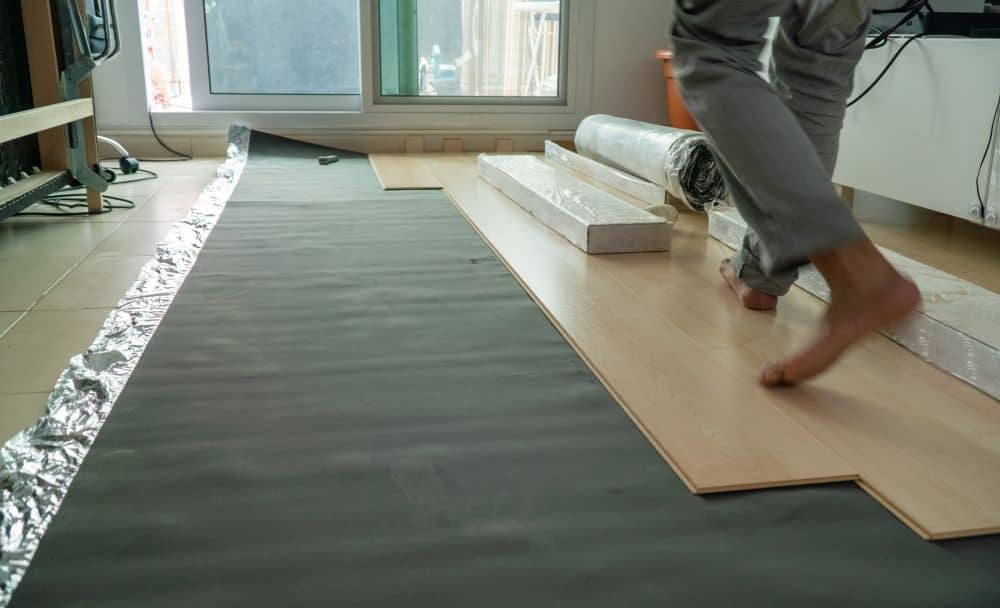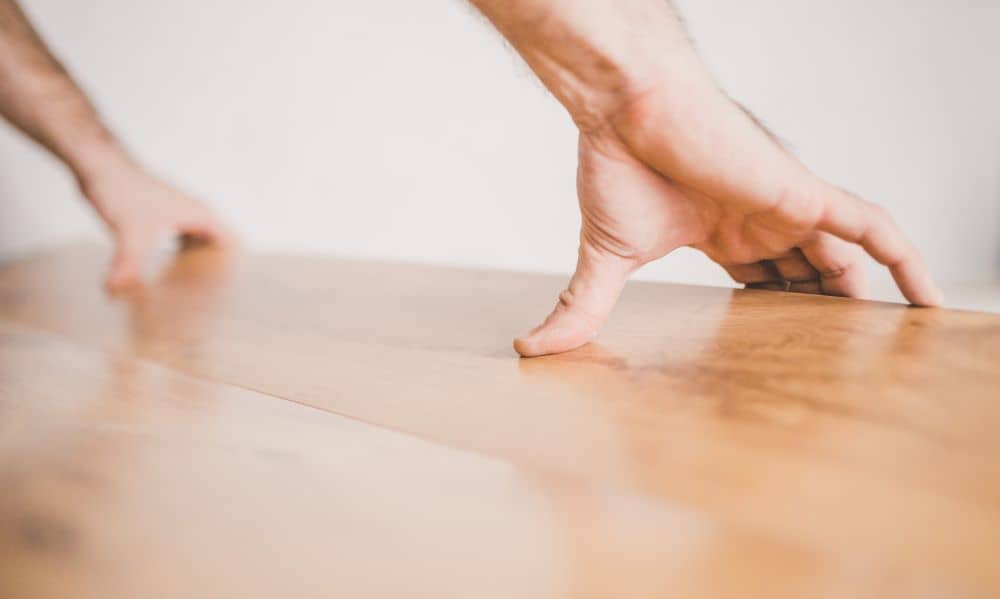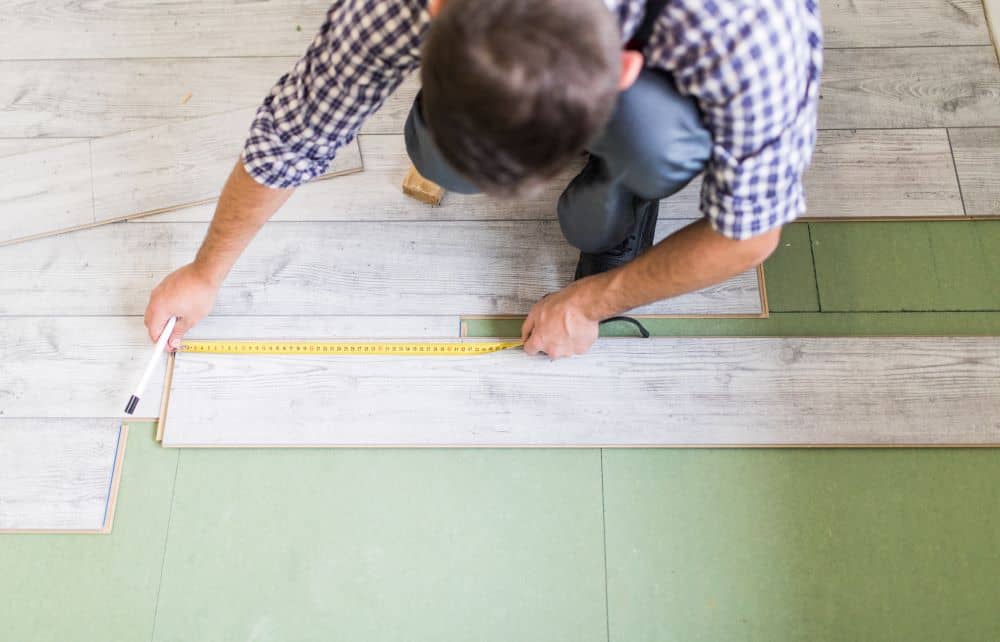Making renovations and changing your home’s interior, exterior, or both can be wonderfully exciting. Changing your flooring is one example of how you can alter the look and feel of your home without knocking out walls or purchasing new furnishings.
Styles, materials, and methods have evolved, and the number of options is nothing less than awe-inspiring. Once you have made your decision, it is time to get down to the nitty-gritty part of the project.
Tile flooring was once the main choice of hard flooring in homes all across Australia. Now homeowners have a far greater array of products to choose from, and many are choosing different looks from other flooring types, including hybrid flooring.
Is Hybrid Flooring Suitable for DIY Installation?
As we have covered what hybrid flooring is in other places, we will jump straight into the nuts and bolts. Hybrid flooring is a great choice for DIYers. A reasonably handy person who is willing to take their time and follow directions can successfully install their hybrid flooring over the existing tiled surface.
If you are doing your installation and do encounter a problem, always reach out for help. Manufacturers, suppliers and our team will gladly answer questions and offer guidance.

Does My Existing Floor Need to be Perfectly Even for Installation?
An even surface ensures a successful installation and a long-lasting floor. The Australian standard is no more than 3mm deviation across 1m of space. This means that if you put a straight edge across a floor, and there is at any point 3mm or more of space visible between the edge and the floor, you are outside of the required tolerance.
Additionally, while this is the Australian standard, many manufacturers have tighter standards, and the manufacturer’s standard always has precedence over the Australian standard. While the product may not be affected by this amount of unevenness in the subfloor, you should not deviate from the Manufacturer’s requirements as if there is a problem with the product as a result of this, your warranty will be voided.
There are two types of subfloor unevenness that you need to be prepared for when laying hybrid flooring over a tiles floor.
- The first is ‘rolling intolerance’ which is generally seen on slabs where the concrete is not even. This will gently rise and fall from place to place. In general though, a good product can ride this intolerance with little damage to the product. However this is not recommended & we advise against this, but it has been done successfully with the right product in the right situation.
- The most dangerous kind of intolerance for hybrid flooring installation is ‘dropping intolerance’ where due to different heights between tiles, there is a drop from one tile to another. It is these sudden drops from one tile to another that present the greatest danger to hard flooring.This is generally caused by an uneven subfloor beneath a tile. As the tiles are straight, but the subfloor is not, ‘plates’ are created due to having to lie the tile on its point of balance, which is generally the centre of the tile. This portion of the tile touches the floor, but the other parts may not, and are filled by the liquid adhesive that sets hard. A skilled tiler can sometimes control this ‘roll’ in the floor, and keep edges to a minimum. However during boom periods when work is aplenty, sometimes good tilers are not on the job, and the cowboys sneak in.
How Does an Uneven Subfloor Damage Flooring?
To understand how damage occurs in hybrid flooring, it is best to think in terms of ‘mountains’ and ‘valleys’. If I lay a straight object across the peak of a mountain, it creates a kind of see-saw. If I lay this same object between two mountains, across the valley, I create a ‘bridge’.
When we ‘bridge’ two highpoints with a rigid floor covering like hybrid flooring, there is a hollow point created under the bridge. When you step into this hollow point, this causes stress through the joins of the product created by the see-saw effect created by the ‘mountains’ created by the high points. Over time, this will cause damage to the joins of the floor, eventually causing them to break. Obviously, the greater the unevenness in the subfloor, the greater the potential damage.
Rolling Intolerance can sometimes not affect the floor if the flooring has enough ‘flex’ in the product to ride the distance between the high points and the low points. Dropping Intolerance on the other hand does not give the product the chance to ‘ride’ an area over a distance, and hence creates a dangerous situation for any flooring over top of a tile to tile drop.
What About Grout Joins?
In general, grout joins have little effect on hybrid floor covering. In general, if the area that is being ‘bridged’ is not great enough that you can push the product down into it then it is not a problem. However, the manufacturer’s installation instructions must be followed at all times.
Spotting Subfloor Unevenness
This can often be quite a difficult thing. Often our subfloor looks fine, but when we get a straight edge to it, it is more like a BMX track! Don’t trust what your eye sees from the top, but get down with a straight edge to see if your floor is level.
How Can I Make Sure My Subfloor is Level?
You need to follow just a few steps to find out if your floor is level enough for you to install hybrid flooring.
These include:
- Search for areas of your floor that look uneven.
- Run a straight edge around your floor and look for areas where the straight edge rocks on a high point or sits between 2 high points.
- Drop to eye level and look to see if there is any space between the floor and your straight edge. If you can, you have located a ‘Valley’.
- Tap one end of the meter stick. If it moves up and down freely, you have found a ‘Mountain’.
Once you have identified the high points and low points, you must decide on how to deal with them. If you have high points, for example, tile corners that protrude up above the mean floor level, it may be a case of simply grinding these areas flat. If however, you find low points, you may feel that it is better to fill these areas with a floor levelling compound. However, if the rectification required is major, it is probably best to bite the bullet and engage the services of a floor preparation specialist.,
Understanding what is necessary to install a hybrid floor over tiles is the key to a simple installation as well as a product you are proud to show to family and friends. For more tips, feel free to reach out to the Online Flooring Store. Our knowledgeable staff can offer installation pointers, suggest solutions, and help you find the floor you will love.







